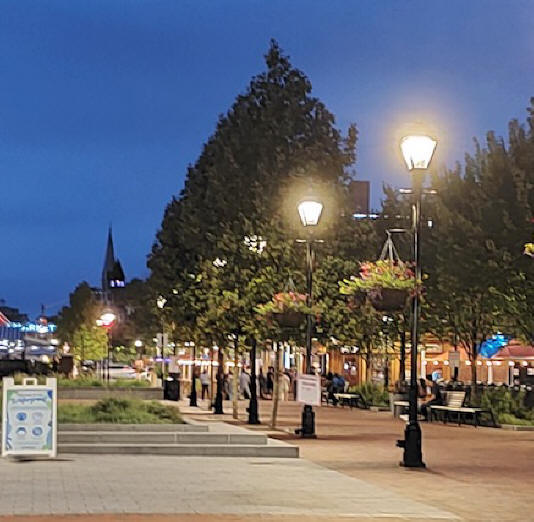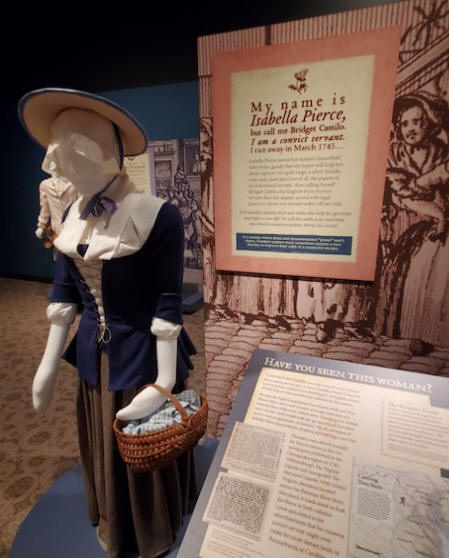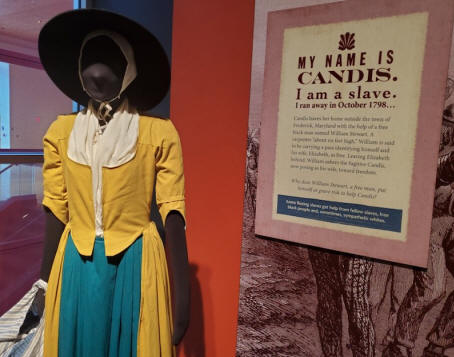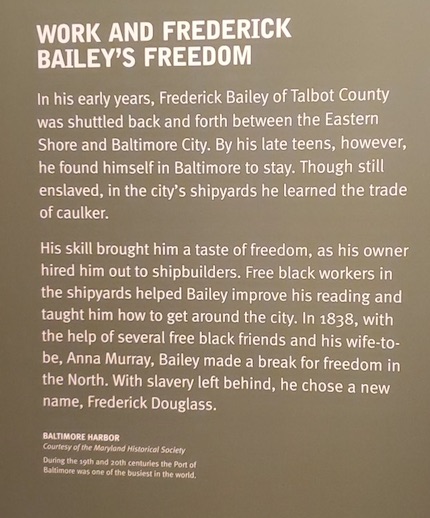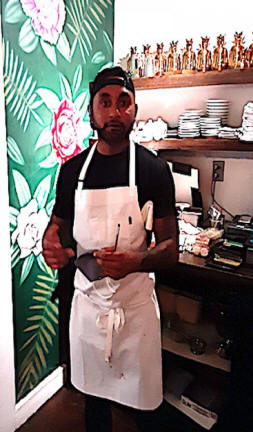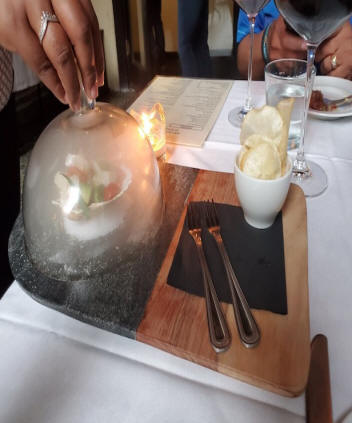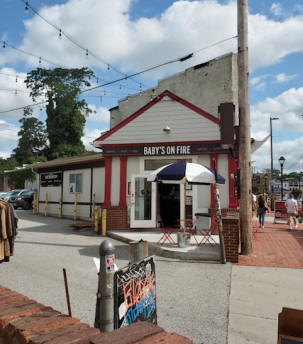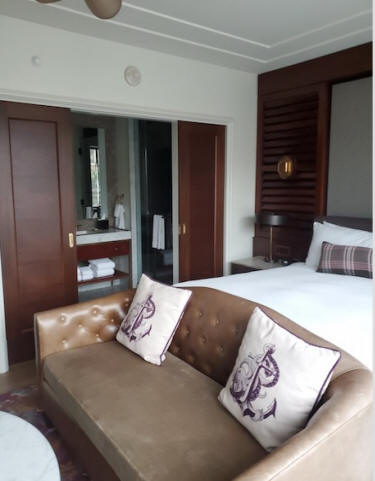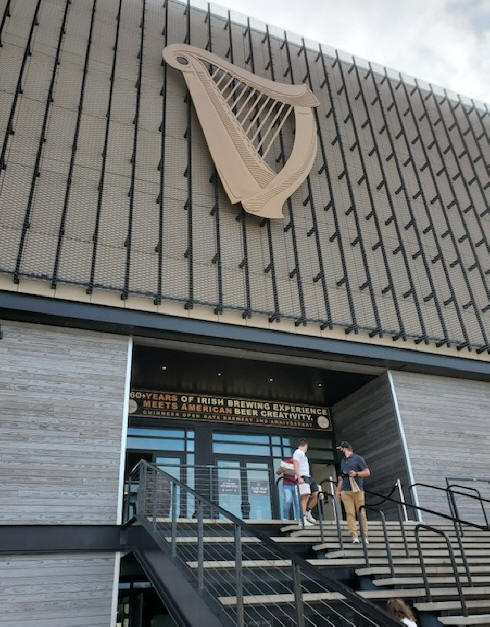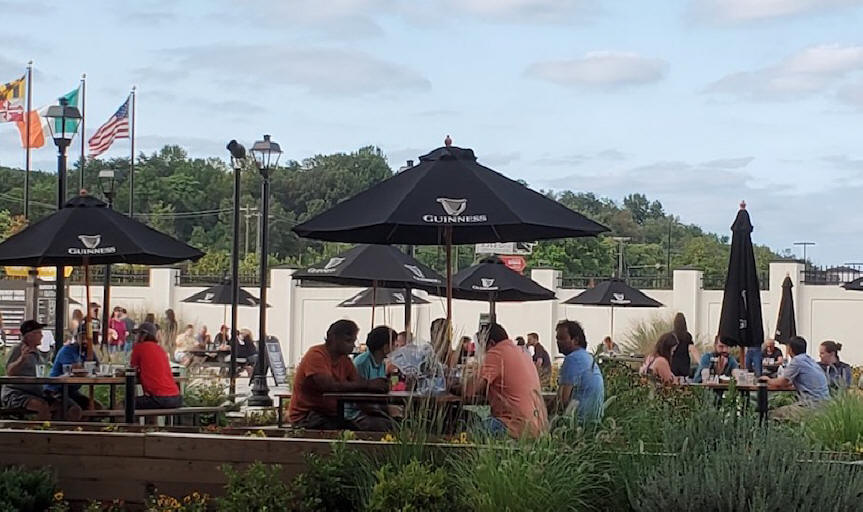
|
|
|
|
Maryland’s African American history officially dates
from 1634. The colonies’ initial black population
probably came from Virginia but was quickly supplemented
by sales directly from Africa, the first “documented”
Africans arriving in 1642. More than most states
Maryland’s stance on slavery was shaped by political
events. In 1639 all slaves’ were stripped of
legal rights and in 1664 the Maryland Assembly deemed
the enslaved slaves for life.
The Reginald Lewis Museum of African American History and Culture interprets the history of African Americans in Maryland through use of more than 11,000 documents and artifacts. Here the story of Douglass is told in its totality including objects and photographs. “Freedom Bound: Runaways of the Chesapeake” is currently on view and individual dioramas and videos convey the stories of a representative group of freedom seekers from 1728-1864. Lewismuseum.org
Frederick met Anna Murray, born free of enslaved parents, in 1838. It is widely held that both her money and her sewing skills facilitated his escape. He set the date for September 3, 1838, dressed as a “blackjack”, a free black sailor, and pocketed a borrowed sailor’s protection pass as proof of his freedom even though the description did not match. He boarded a train bound for Philadelphia and reached New York the next day. On September 15th he wed Anna in New York City. President Street Station is now the Baltimore Civil Rights Museum. The story of Douglass’ escape and the story of Henry “Box” Brown are exhibited on site. Once free Douglass always considered September 3, 1838 as the marker for his free life and celebrated it as his birthday. English supporters purchased Douglass freedom for $711.66, $25,008.33 today, from Hugh Auld in December 1846. The orator and abolitionist returned to Sharp Street Memorial Church, where he had been a choir member, in 1864. He spoke on equal rights and personal dignity. In 1892 he purchased land and built five rowhomes on Strawberry Row, 516-524, to be rented to African Americans. The homes are now known as Douglass Row on South Dallas Street. There is a plaque on his former residence at 524.
The only wax museum dedicated to African American history is located in Baltimore. The National Great Blacks in Wax Museum begins with an interactive slave ship exhibit and guides you through the history chronologically with thematic galleries. A remarkable likeness of Frederick Douglass in his political prime is on the main floor.
Duck Duck Goose, 814 S. Broadway, is absolutely awesome and when in Baltimore it is not to missed. Chef Ashish Alfred puts a unique and personal twist on a classic French brasserie using the freshest ingredients and meticulous preparation. With chic ambience, creative décor, optional patio setting and exemplary service dining here is a true gourmet experience. www.ddgbaltimore.com
Baby’s on Fire is another of Fell’s Point singular restaurants. Breakfast and lunch are served all day indoors and outside. It is adjacent to the Sound Garden, the city’s largest independent record shop, recognized by Rolling Stone as the country’s 2nd best record store. 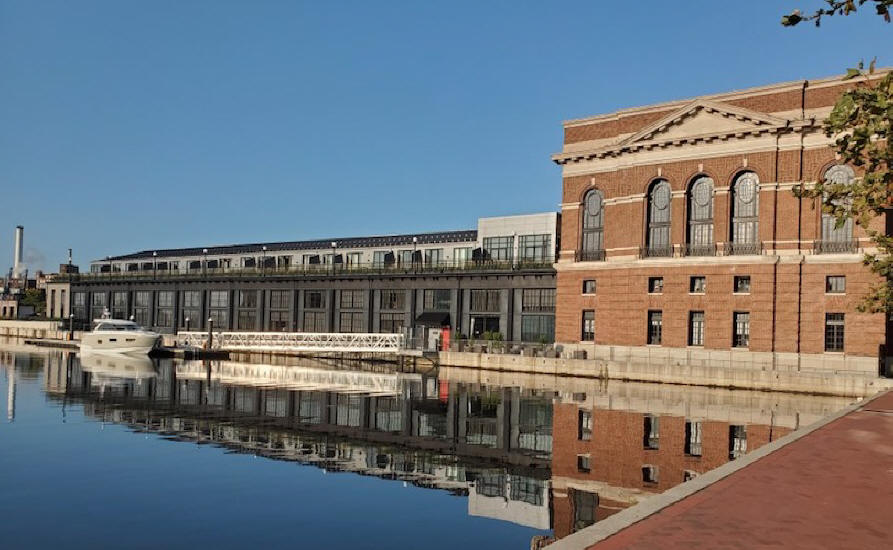 
Ideally situated waterside on the harbor on Baltimore’s Recreation Pier sits the extraordinary Sagamore Pendry Baltimore. The renovated pier reflects its history and architecture and incorporates superior service, artfully curated public spaces and plush accommodations with deluxe linens, bath products and harbor views. Trendy amenities include spa services, a pool with private cabanas and bar and 24-hour exercise room. Pendryhotels.com/baltimore
Renee Gordon has written a weekly travel column for the Philadelphia Sun Newspaper for the past fifteen years and has published articles on local, national and international travel in numerous publications. Her columns focus on cultural, historic and heritage tourism and her areas of specialization are sites and attractions related to African American and African Diaspora history. Renee has been a guest radio commentator on various aspects of tourism and appeared in a documentary, "The Red Summer of 1919". As an educator for thirty years she was an English teacher, event and meeting planner, served as an educational consultant and intern-teacher mentor. She contributed to textbooks on women's history and classroom management and has facilitated workshops on both subjects. Renee considers herself a "missionary journalist" and as such she continues to promote heritage and sustainable tourism. 2013 Recipient of African Diaspora World Tourism Flame Keeper in Media Award for Travel Writing Affiliations
We'd love your comments!
|
Connect with us on:
American Roads and | ||||||||||||||||||
|
Public Disclosure--
Please Read The FTC has a law requiring web sites to let their readers know if any of the stories are "sponsored" or compensated. We also are to let readers know if any of our links are ads. Most are not. They are just a way to direct you to more information about the article where the link is placed. We also have several ads on our pages. They are clearly marked as ads. I think readers are smart enough to know an ad when they see one but to obey the letter of the law, I am putting this statement here to make sure everyone understands. American Roads and Global Highways may contain affiliate links or ads. Further, as their bios show, most of the feature writers are professional travel writers. As such we are frequently invited on press trips, also called fam trips. On these trips most of our lodging, dining, admissions fees and often plane fare are covered by the city or firm hosting the trip. It is an opportunity to visit places we might not otherwise be able to visit. However, no one tells us what to write about those places. All opinions are 100% those of the author of that feature column. |
|||||||||||||||||||
|
Privacy Policy/ Archives /
Contributors /
Subscribe to
American Roads Books by
Kathleen Walls /
Contact /
Sponsor or Advertise/ American Roads & Global Highways Home Page
|




